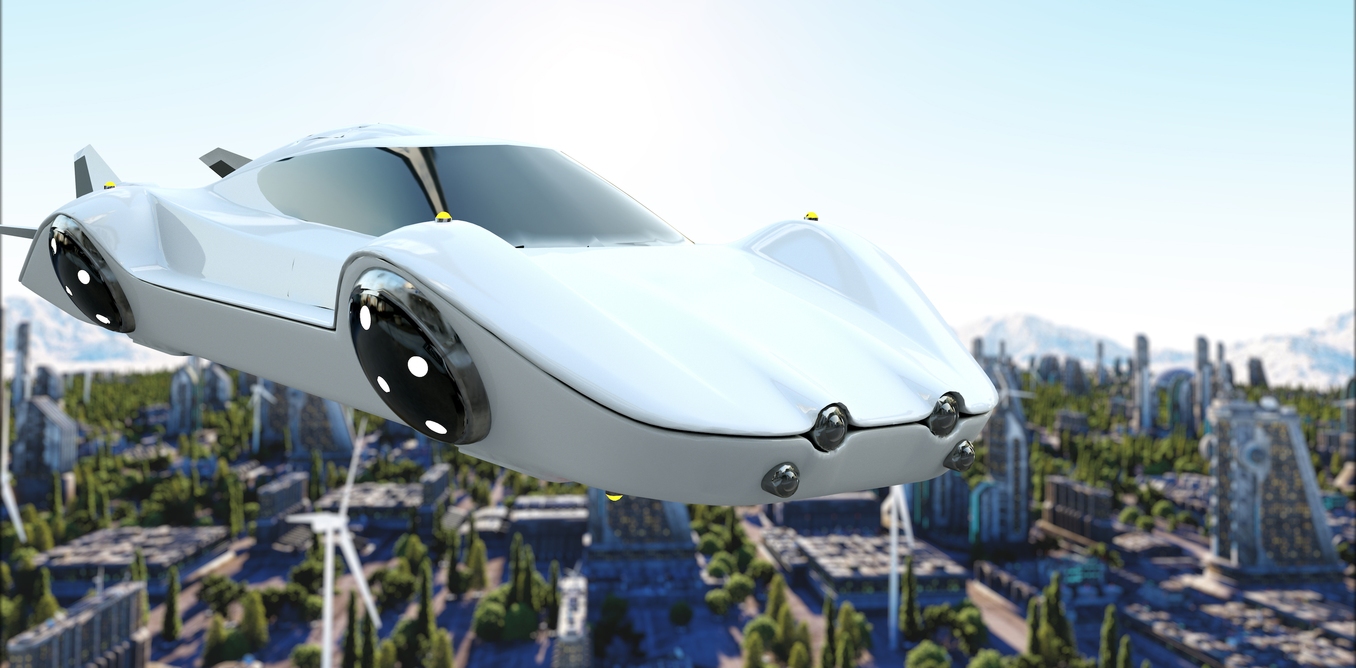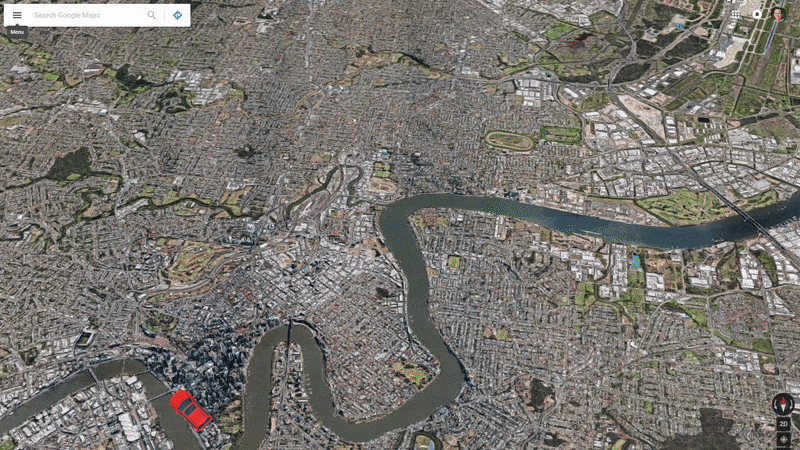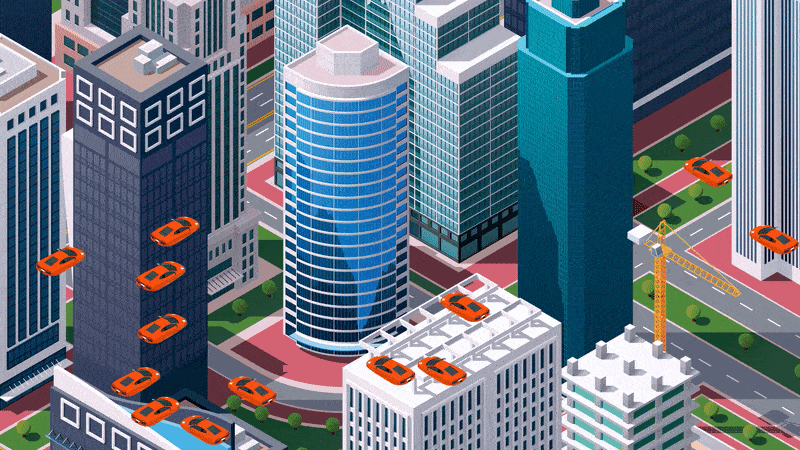
Robotizing cars literally captured the world. Experts predict that by 2030 cars with fully computer-controlled cars will be rolling on the roads. A person will be able to control his car if desired, but such a need will not be. Well, what about flying machines? Here, too, there are shifts. So, Uber is going to develop its own vehicle by 2020.
Now it is not the only company that is engaged in such a project. But how realistic are these plans? Perhaps this is just a marketing hyip? For many of us, a flying car is a synonym for the future, like food in pills and silver clothes. So will many dreams of flying cars be realized?
How can it look like?
The classic idea of a flying car is, in fact, a car that can somehow be in the air.
Ian Fleming was a famous fan of the idea of flying cars; he mentioned them in his 1963 novel
Chitty Chitty Bang Bang . He also used the idea of a flying car in one of the novels about James Bond in 1964, the same car appeared in the film “The Man with the Golden Gun”. The basic idea is simple - it is a car with wings that can drive on ordinary roads, but if necessary it rises into the air.
Science fiction writers and filmmakers of the respective genres often exploited the idea of flying machines. In some works, this idea was transformed into flying scooters, when the roads are not needed at all. On one of these "scooters" Anakin Skywalker flew in the movie "Attack of the Clones."
Clearly, there are other concepts of such devices, including scooters on antigravah. Now various companies are implementing the original idea of a flying machine, creating hybrids of cars and aircraft, cars and helicopters, cars and copters.
In general, any small aircraft can be called a flying car. But this is only a kind of aircraft, and not cars.
How safe is it?
Any passenger of such a car wants to know everything about its safety. The likely answer is “not very safe,” because the technology is still being developed. Companies are working to make their machines safe, hoping to get approval from regulators and governments of various countries.
But, of course, the security schemes are different here, they are different from what we used to see in the car. For example, a car can be stopped in case of a problem. Well, with the aircraft it can not be done - it just falls down. Moreover, the accident threatens the life and health of not only those inside the cabin, but also those below.
In order to avoid the problem of falling, the Chinese company
Ehang proposes to equip their flying taxis in Dubai with a parachute. This service, in particular, offers transportation of passengers from the roof of one skyscraper to the roof of another.
True, it is unclear how the system works with a parachute. After all, the aircraft does not have a parachute control system.
In conventional aircraft, most flight tasks are automated. They say that the pilots are responsible, mainly for taking off and landing, and even then not always. But in airplanes, security systems are repeatedly duplicated. There are a lot of them. In a miniature aircraft, this is out of the question.
On the other hand, miniature aircraft are less complex than business jets, so that the management of take-off, flight and landing is easier here.
Now some companies have begun to promote the idea of electric turbines. An example is an aircraft from Lilium, a relatively new startup. The introduction of electric motors and the replacement of conventional ICE by them leads to a simplification of the circuit of the apparatus itself. It also becomes possible to duplicate each other with motors - if one of them fails, another one enters the work.
In general, it is safe to say that companies developing such aircraft will achieve their goal and make them safe.
How fast and how far?
The advantages of car-planes are indisputable. The absence of traffic jams, traffic lights and other things greatly simplifies the life of the driver (pilot?).
In addition, flying in a straight line is not at all the same as driving along a road with all its curves. Even if the vehicle will not fly too fast, the travel time is reduced several times.
Probably, if flying cars become widespread, the authorities will create something like air corridors along which automobile transport will move. It can be assumed that such corridors will pass through safe areas where there are no or few people. So the accident will not cause significant consequences with human victims.
And even in a big city you can overcome several tens of kilometers in a few minutes.
How easy is that?
There are several fairly complex problems that are worth remembering when implementing the idea of flying cars, but some only seem to be difficult.
For example, in three-dimensional space, when you can move not only left-right and back and forth, but also up and down facilitates the task of navigation.

Even if there will be a lot of flying cars, a few hundred meters of height as an authorized corridor is enough to fly around the neighbors. Plus, the authorities do not need to worry about the creation of transport infrastructure. No signs, no traffic lights, nothing. Only relevant landing sites are needed, some of which will not differ from modern helicopter platforms, which are located on the roofs of skyscrapers.
Regulation of the movement of vehicles of this type? There is nothing easier.

And how much does it cost?
It is too early to talk about how the economy of flying transport will work. There are a lot of ambiguities with regulators, with safety, infrastructure (some kind of, but it should be), charging or filling stations. One can only guess.
But you still do not need to forget that a flying car is an expensive pleasure. The same Uber company, which promises to release flying taxis by 2020, works in many cases at a loss. The company is trying to attract customers cheap trip. And it works. The profit is very small, but the company plans to compensate this problem with the help of robotic taxis, which do not need to pay as drivers. If the same experience will be transferred to flying vehicles, then making a profit is quite a real task.
Will passengers pay for reducing the time to go from point A to point B? Probably yes.
So when will this happen?
Now there is too much unclear, so it’s hard to say exactly when aircraft-cars are not theory and concepts, but practice.
Most likely, when planes-cars become more or less widespread, they will be used in a number of niches, not everywhere. And only over time their specialization will become more universal.
But it will happen very soon. Probably, many of us will dress in silver costumes and get the latest food products in the form of tablets even before flying cars become a mass phenomenon.